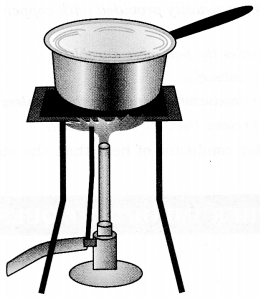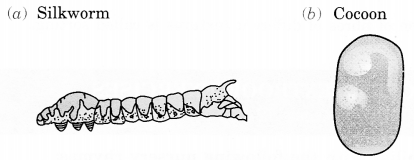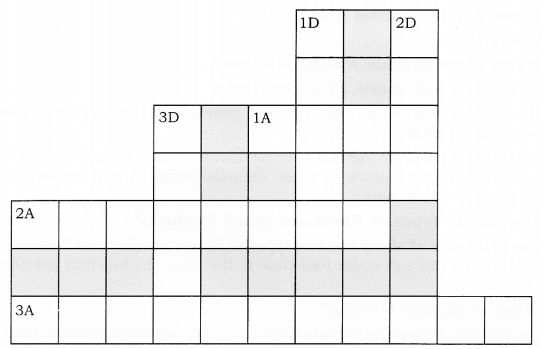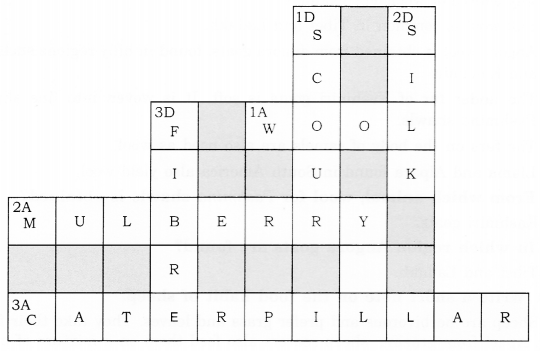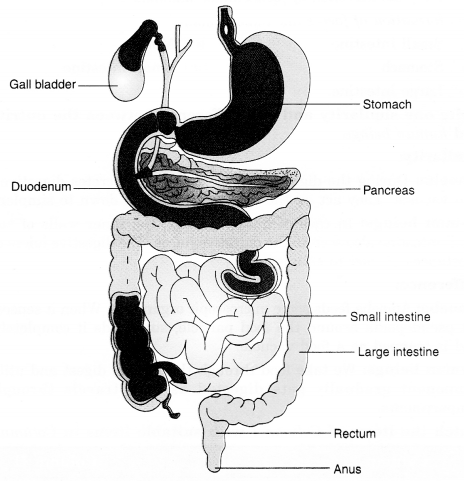NCERT Solutions for Class 7 Science Chapter 5 Acids, Bases and Salts are part of NCERT Solutions for Class 7 Science. Here we have given NCERT Solutions for Class 7 Science Chapter 5 Acids, Bases and Salts.
| Board | CBSE |
| Textbook | NCERT |
| Class | Class 7 |
| Subject | Science |
| Chapter | Chapter 5 |
| Chapter Name | Acids, Bases and Salts |
| Number of Questions Solved | 11 |
| Category | NCERT Solutions |
NCERT Solutions for Class 7 Science Chapter 5 Acids, Bases and Salts
Question 1.
State differences between acids and bases.
Answer:
| Acids | Bases |
| 1. Acids are sour to taste | 1. Bases are bitter to taste. |
| 2. Acids turn blue litmus red. | 2. Bases turn red litmus blue. |
| 3. Acid is defined as a substance which contains hydrogen ion. | 3. A base is defined as a substance which contains hydroxyl ion. |
Question 2.
Ammonia is found in many household products, such as window cleaners. It turns red litmus blue. What is its nature?
Answer:
Ammonia has basic nature.
Question 3.
Name the source from which litmus solution is obtained. What is the use of this solution?
Answer:
The extraction of litmus solution takes place from Lichens (a symbiotic association of algae and fungi). It is used to determine whether the given solution is acidic or basic.
Question 4.
Is the distilled water acidic, basic, or neutral? How would you verify it?
Answer:
Distilled water is neutral. We can verify it by showing that neither blue nor red litmus paper changes its colour when dipped in it.
Question 5.
Describe the process of neutralization with the help of an example.
Answer:
The process in which an acid reacts with a base to form salt and water is known as a neutralization reaction. For example,

Question 6.
Mark ‘T’ if the statement is true and ‘F’ if it is false :
(i) Nitric acid turns red litmus blue. (T/F)
(ii) Sodium hydroxide turns blue litmus red. (T/F)
(iii) Sodium hydroxide and hydrochloric acid neutralize each other and form salt and water. (T/F)
(iv) Indicator is a substance which shows different colours in acidic and basic solutions. (T/F)
(v) Tooth decay is caused by the presence of a base. (T/F)
Answer:
(i) F
(ii) F
(iii) T
(iv) T
(v) F
Question 7.
Dorji has a few bottles of soft drink in his restaurant. But, unfortunately, these are not labelled. He has to serve the drinks on the demand of customers. One customer wants acidic drink, another wants basic and third one wants a neutral drink. How will Dorji decide which drink is to be served to whom?
Answer:
He can decide by the use of an indicator. If the sample of drink turns red litmus blue, it is basic. If it turns blue litmus red, it is acidic. If it does not affect litmus, it is neutral.
Question 8.
Explain why :
(a) An antacid tablet is taken when you suffer from acidity.
(b) Calamine solution is applied on the skin when an ant bites.
(c) Factory waste is neutralised before disposing it into the water bodies.
Answer:
(a) To relieve indigestion, we take an antacid such as milk of magnesia. It neutralizes the effect of excessive acid.
(b) When an ant bites, it injects the acidic liquid into the skin. This acidic liquid is formic acid, which leads to inflammation to the skin. The effect of the sting can be neutralised by rubbing calamine solution which contains zinc carbonate. The zinc carbonate is a weak base and causes no harm to the skin.
(c) The wastes of many factories usually contain acids. If they are allowed to flow into the water bodies without neutralising it properly, then the acids will kill fish and other aquatic organisms. So factory wastes must be neutralised by adding some basic substances into the wastes before disposing these into water bodies.
Question 9.
Three liquids are given to you. One is hydrochloric acid, another is sodium hydroxide and third is a sugar solution. How will you identify them? You have only a turmeric indicators.
Answer:
| S.No. | Name of substance | Effect on turmeric indicator |
| 1. | Hydrochloric acid | The yellow colour of turmeric turns blue |
| 2. | Sodium hydroxide | The yellow colour of turmeric turns red |
| 3. | Sugar solution | No change in turmeric colour |
Question 10.
Blue litmus paper is dipped in a solution. It remains blue. What is the nature of the solution? Explain.
Answer:
The solution may be neutral or basic. Both types of substances have no effect on blue litmus. Put a drop of this solution on a red litmus paper. If it turns blue, then the above solution is basic in nature and if no colour change occurs, then it is neutral.
Question 11.
Consider the following statements:
(a) Both acids and bases change colour of all indicators.
(b) If an indicator gives a colour change with an acid, it does not give a change with a base.
(c) If an indicator changes colour with a base, it does not change colour with an acid.
(d) Change of colour in acid, and a base depends on the type of the indicator.
Which of these statements are correct?
(i) All four
(ii) (a) and (d)
(iii) (b) and (c)
(iv) Only (d)
Answer:
(ii) (a) and (d)
We hope the NCERT Solutions for Class 7 Science Chapter 5 Acids, Bases and Salts help you. If you have any query regarding NCERT Solutions for Class 7 Science Chapter 5 Acids, Bases and Salts, drop a comment below and we will get back to you at the earliest.
